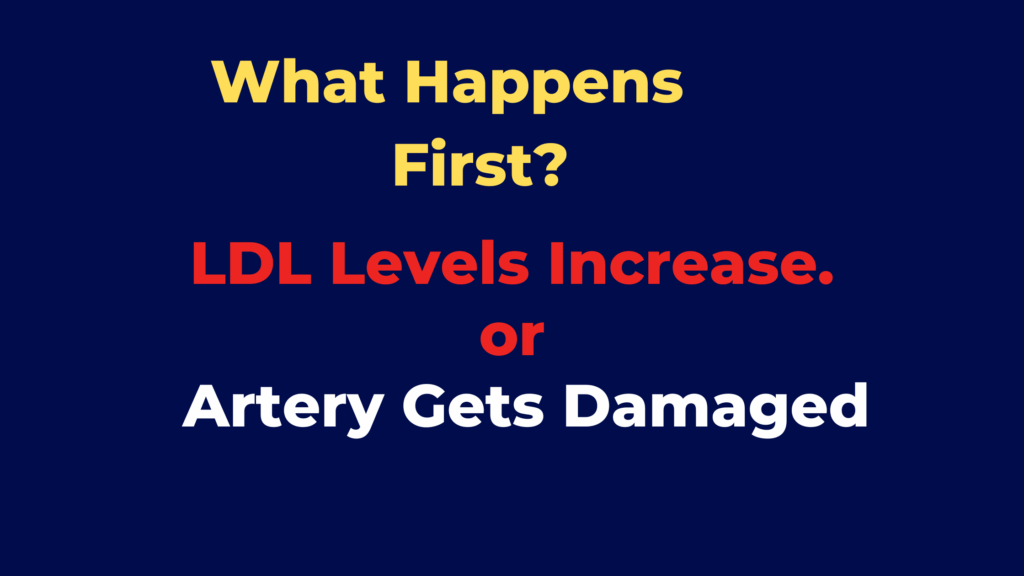Introduction
When it comes to heart health, most people think ldl levels increase first and then cause artery damage. But is that really how it happens? Understanding whether LDL cholesterol rises before arteries get injured or if artery damage starts the process can help us better prevent heart disease. Many want clear answers, but the relationship between LDL levels and artery health is more complex than it seems. Knowing the order of events can shape how we stay healthy and fight heart problems early.
How LDL Cholesterol Contributes to Cardiovascular Health
What is LDL Cholesterol?
LDL, or low-density lipoprotein, is often called “bad cholesterol.” It carries cholesterol through your blood. Your body needs some cholesterol for cells and hormones, but too much can cause problems.
Normal LDL levels should stay under 100 mg/dL. When LDL climbs above 130 mg/dL, the risk of heart disease increases. High LDL levels are a sign your cholesterol balance might be off, making you more prone to damage.
The Process of LDL Accumulation
LDL particles can slip into the walls of your arteries. Once inside, they deposit cholesterol there. Over time, these deposits grow, forming fatty streaks.
Things like a poor diet, genetics, and lifestyle habits influence LDL levels. Eating lots of saturated fat or having a family history can push your LDL higher.
Impact of Elevated LDL on Heart Health
High LDL is strongly linked to heart problems. Studies show that lowering LDL reduces the chances of heart attacks and strokes.
Many people have managed their LDL well through medication and lifestyle changes. These success stories highlight that controlling cholesterol can protect arteries before damage happens.
How Artery Damage Occurs
Types of Artery Damage
Damage to arteries happens in stages. The first is endothelial dysfunction, where the inner lining of the artery weakens. Later, plaque forms—a mix of fats, cells, and debris—that narrows the arteries.
Plaque buildup can block blood flow, leading to heart attacks or strokes if not managed.
Causes of Artery Damage
- Mechanical stress from high blood pressure wears down artery walls.
- Inflammation from smoking or pollution inflames the lining.
- External factors like smoking, poor diet, and lack of exercise speed up the damage.
The Pathophysiology of Arterial Injury
Damage starts slowly. Small injuries in the lining of your arteries happen often but usually repair themselves. If damage is repeated, it builds up, causing plaques to form.
Cholesterol and other lipids play critical roles here—they accumulate where the damage occurs, making repairs harder and increasing risks.
Which Comes First: Elevated LDL or Arterial Damage?
Evidence Supporting LDL as the Primary Culprit
Research shows high LDL levels often trigger the process. Elevated LDL can cause small injuries in the artery walls early on.
Biological studies reveal LDL particles penetrate artery linings easily, setting off inflammation and damage. This makes high LDL a likely trigger in most cases.
Evidence Supporting Damage as an Initiator
Some cases show artery damage happening before LDL levels go up. Factors like high blood pressure or smoking can harm arteries independently.
In these situations, damage might kick off the problem, which then worsens LDL cholesterol as the body reacts to injury.
Expert Opinions and Consensus
Most heart health guidelines agree that high LDL is a dangerous factor. Leading cardiologists prefer to target LDL early to stop damage before it starts.
But they also acknowledge that artery injury can come from other causes, with LDL playing a key role in advancing damage once the injury begins.
The Interrelationship Between LDL and Arterial Damage
How Elevated LDL and Damage Reinforce Each Other
Once damage starts, LDL levels often climb further. Broken arteries let more LDL particles enter, making the problem worse.
It’s a cycle—damage attracts more cholesterol, which causes more injury. Early damage can even cause fluctuations in LDL levels, making management tricky.
Implications for Prevention and Treatment
The best approach? Lower LDL early with lifestyle changes and medications when needed.
Protect arteries by controlling blood pressure, quitting smoking, and maintaining a healthy weight. This way, we break the cycle before serious damage occurs.
Actionable Tips for Maintaining Heart and Arterial Health
- Get regular cholesterol tests.
- Adopt a heart-healthy diet—cut down on saturated fats and sugar.
- Stay active—exercise helps lower LDL and improves artery flexibility.
- Manage stress and avoid smoking.
- Talk to your doctor about medications if your LDL stays high despite lifestyle efforts.
Conclusion
The link between LDL levels and artery health isn’t straightforward. Elevated LDL can speed up artery damage, but injury from other causes can also lead to rising LDL. The key is early action: lowering LDL and preventing damage from happening in the first place. By understanding this process, you can make smarter choices that protect your heart over the years. Remember, early steps today can keep your arteries healthy tomorrow.
Lypro-C is a nutritional supplement that lowers lpa, ldl and stops atherosclerosis

